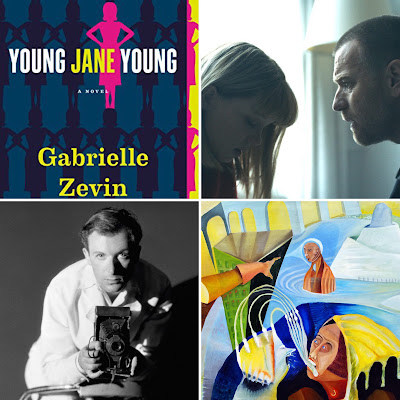ROUND-UP July 9-24, 2018
Hello, dear readers! I'm starting to consider just doing these posts on a monthly basis so that they're more regular. Anyway, enjoy an art review, two movie reviews, and a book review!
- "'Young Jane Young' and the Monicas, the Hillarys, and Other Women Impacted by Sex Scandals," PopMatters, July 9, 2018.
- "Best of the Worst, a lively show of rejects, at Practice Gallery," Artblog, July 19, 2018.
"Both an artist opportunity and a canny homage to the original 1863 Salon de Refusés, “Best of the Worst” is a much more sly challenge to its neighboring galleries than it purports to be. Like the 1863 Salon, Practice is suggesting that the works on its walls — over 40 pieces — are perhaps better, and more avant-garde, than what’s on the walls at the juried shows; with a wink and a nudge, Practice stakes its claim for posterity through association.
"Of course, in order to back up that assertion, the works in “Best of the Worst” need to push the envelope in some way—to shock, confuse, even disgust us. But on its face, there isn’t much in “Best of the Worst” that distinguishes itself from other juried shows. There’s certainly talent on display in a wide variety of media–sculpture, painting, photography, installation, even video. But as an overall experience, “Best of the Worst” is marked by a sense of disjointedness. Because the central theme is a “best of” show, with no single aesthetic, and the works don’t relate to one another thematically. Instead, the pleasures in “Best of the Worst” are often found in singular contributions as discrete units."
- "[Review:] Love, Cecil," Moviejawn, July 23, 2018.
- "'Zoe' Is An Endlessly Circular Mope-Fest," BUST Magazine, July 24, 2018.

Comments
Post a Comment